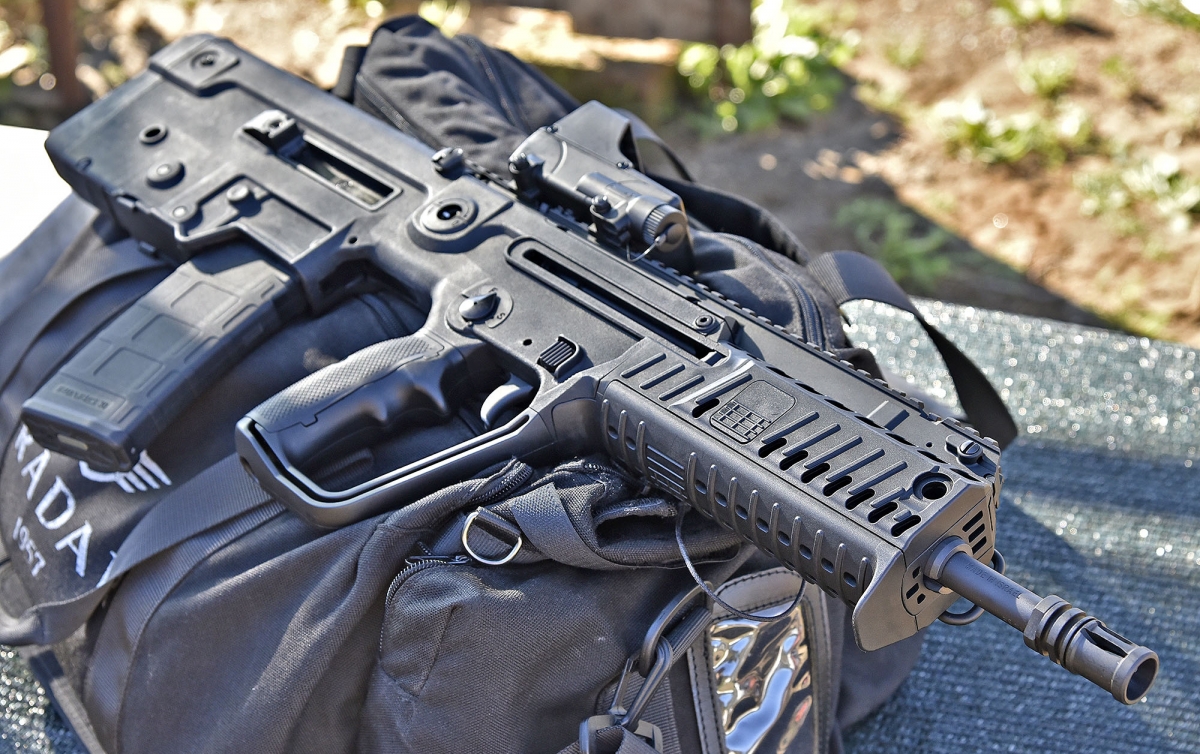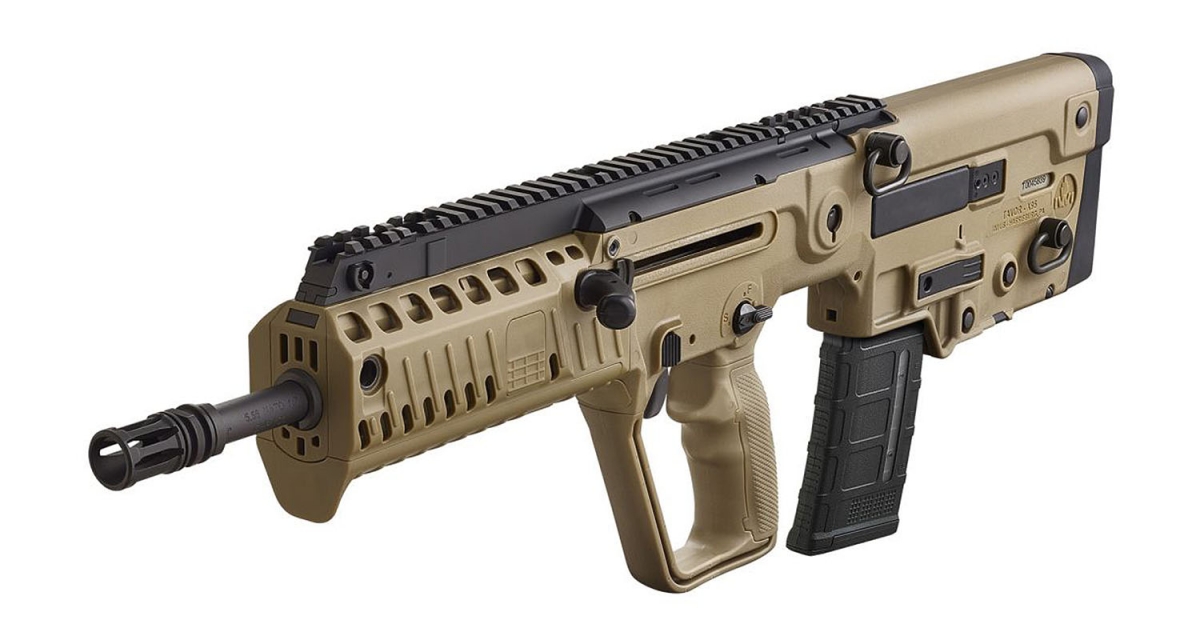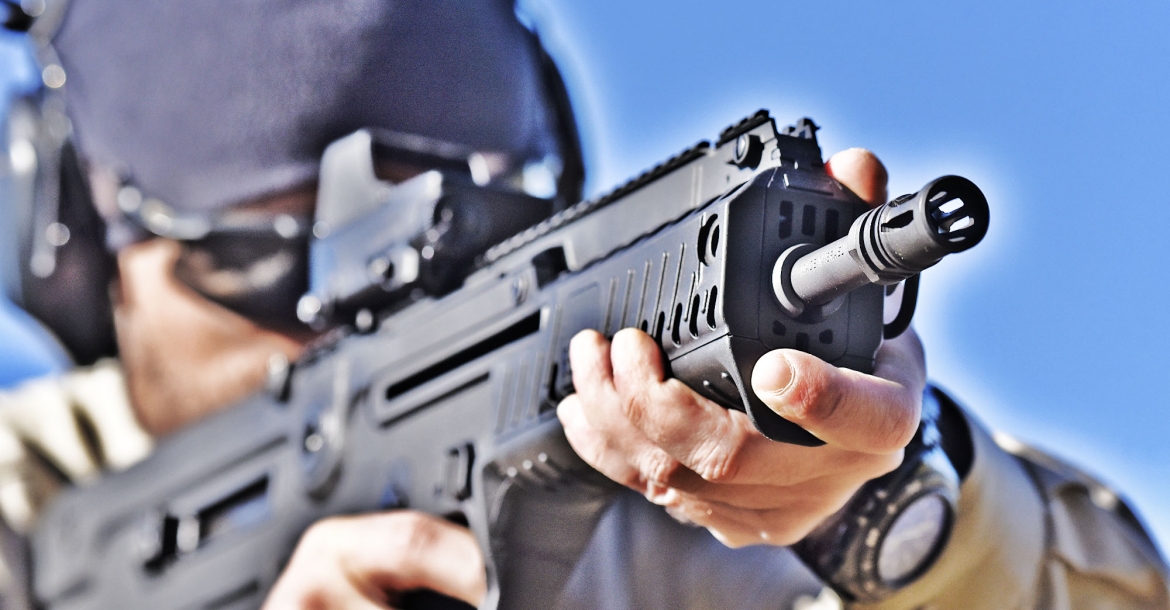IWI Tavor X95, the "civilized" warrior (field evaluations)
The IWI Tavor X95 is the Israeli army standard assault rifle, a bullpup rifle with an attractive design. Let’s see the semi-automatic version available on the the civilian market
Read also: IWI Tavor X95, the "civilized" warrior (the origins)
Compact, futuristic and badass-looking, the IWI Tavor X95 has been mainly talked about, frequently without much first hand experience, as up until recently it wasn’t all that easy to find one outside Israel. But since this year, a semi-automatic version it is finally available also on the civilian market.

The IWI X95 is considered by many observers to be currently the world's best bull-pup assault rifle
The IWI X95 of these pictures has been equipped with a Meprolight RDS Tru-Dot 1.8
Some of what has been said is actually correct, some is conjecture, some is wild guess, as even if one knows perfectly how the mechanical system of a firearm works, one thing is evaluating it from a theoretical point of view, another actually handling it and shooting it, either on a static range or under simulated operative conditions.
I’ve had various chances of handling and shooting the Tavor X95, and I must say that this rifle indeed has many considerable virtues… and some issues.
Right side of the X95 semi-automatic rifle: the ejection port is located on this side, just above the magazine well
Left side of the X95 rifle: the cocking handle is located just above the pistol grip, and is reversible
The bullpup layout makes the X95 an extremely compact and manageable semi-automatic rifle
First of all, it’s very compact. This reflects in a considerable ease of handling in tight spaces.
Thanks to the unconventional bullpup architecture, the center of mass of the rifle is closer to the shooter’s shoulder than in most traditional rifles, falling between the grip and the buttplate, allowing for very fast transitions from target to target.
Grip and forearm make for a very compact shooting position, offering less of a target and making the actual firing of the rifle in cramped spaces much easier.
While the magazine well is in an unusual position, it’s not at all that difficult to perform quick magazine changes, it’s just a matter of getting used to it.

The design of the X95 semi-automatic rifle is definitely captivating
The X95 feeds through STANAG 4179 compliant AR-15 type magazines: hereby portrayed are a standard metal STANAG magazine and a polymer MagPul PMAG
The X-95 accepts standard NATO magazines and cartridges, unlike some other bullpup rifles like the Steyr AUG (which uses a proprietary magazine) and the FAMAS (which needs its own specific reduced load cartridges).
The Tavor X95 is a gas-operated, rotating bolt, piston-driven 5.56mm/.223 caliber rifle, feeding through STANAG magazines. The chrome-lined barrel is 16" long with six right-handed grooves and a 1-in7" twist.
A straight-blowback pistol caliber version also exists: it comes with a 17" barrel and feeds through Colt/UZI magazines.
Field stripping of the IWI Tavor X95 is really simple and does not require any special tool. Even a pen would be more than enough.
All it takes to field-strip the X95 is the removal of three passing pins: one holds the buttpad in place, the others allow the removal of the hold-open lever and the release of the trigger group
The buttpad dubs as the access port for the gas piston - bolt - bolt carrier group, which can be easily removed from its seat
The Tavor X95 rifle is compatible with the Tavor SAR Gen.1 trigger group, but not vice-versa
The IWI X95 semi-automatic rifle, field-stripped: this is as far as the user should go for ordinary cleaning and maintenance
The handguard rails are exposed through the simple removal of the polymer covers
The X95 semi-automatic rifle is factory-issued with IWI's own compact, yet complete field cleaning kit
The X95 comes issued with back-up iron sights that fold down within the top Picatinny rail
Front sight up
Front sight down
Rear sight up
Rear sight down
The full-length top Picatinny rail is compatible with most aftermarket optical systems
In this case, we installed a Meprolight RDS Tru-Dot 1.8 MOA
The Tavor X95 bullpup rifle comes with a full-length MIL-STD 1913 Picatinny rail for optics, with 3 additional rails on the forearm, protected by removable polymer panels and.
The rail on the civilian version lacks the proprietary magnifier mounting point, an absence I’m not going to spend a tear on, as it leaves more 1913 rail space for accessories.
Adjustable flip-up front and rear sights are also issued, and when folded they literally disappear within the rail.
The polymer protective panels can slide out of the handguard to expose all the tactical rails, or even just one or two at the time
A military-style wide trigger guard allows easy trigger reach even when wearing tactical gloves
The polymer grip assembly of the X95 rifle is a stand-alone component that can be swapped upon field-stripping to improve ergonomics and to suit the needs and preferences of each individual shooter.
The factory-issued "IDF" grip assembly features interchangeable side panels and a wide, glove-friendly trigger guard: it can be replaced with a fairly more conventional grip assembly with finger grooves and a standard trigger guard, available as an aftermarket accessory.
The rifle is completely ambidextrous, as all controls are present on both sides or are placed so that they can be reached by both hands.
The ejection port is reversible, as with in most bullpup rifles, and so is the charging handle, unlike most bullpup rifles and the Tavor gen-1.
The left side of the stock
The cocking handle can be reverted to both sides.
The manual safety, at easy trigger reach
The magazine release button is located just above the trigger guard
The Tavor X95 features an AR-15 like fenced magazine catch. This has been a vehemently asked for improvement, as the old magazine lever was difficult to operate and prone to be accidentally depressed, particularly when running with the rifle in hand.
So, while we are accustomed to look for the magazine catch near the actual magazine well, in the Tavor X95 the magazine release button is now in front of the trigger guard.
The button is easy to operate, and this is the reason for it is fenced. Once the magazine release is operated, the empty magazine drops free and a fresh one can be inserted. And here is where I find a first issue concerning this bullpup rifle.
The slide stop catch is located right behind the magazine well, just in the right position to be activated with the shooter's thumb when inserting the magazine, but there are downsides with that too
The position of the hold-open release catch can be considered user-friendly and troublesome at the same time
Due to its position, if you are not careful, you may depress the bolt release while the magazine is still only partially inserted in the mag well, and not yet locked home.
This can cause the shooter to either close the bolt on an empty chamber and then lock the magazine in place, or close the bolt on an empty chamber and believe the magazine is in place… only to have it fall free when he tries to shoot.
It’s not a theoretical speculation: the first happened to me a couple of times, the second happened repeatedly to other people that were testing the rifle.
I believe this is just a matter of training, or of just learning to insert the magazine solidly in place, leave it and then move the thumb to depress the bolt release lever (which is the course of action I’d recommend to anyone who doesn’t have much time to spare to learn to feel the magazine positively locking in place before letting the thumb reach the bolt release lever). It’s not a damning issue, but it’s worth mentioning and knowing.
The X95 semi-automatic rifle is extremely compact and a pleasure to shoot; notice the full-length top Picatinny rail
Handling a bull-pup rifle can seem awkward at first, but will become practical and pleasurable in a very short time
All key components in a bullpup rifle is located within the stock, and that's where spent cases come out from as wekk
Unlike in conventional firearms, exhaust gases in a bull-pup rifle vent through the stock and out from the ejection window, very close to the shooter's face
Not really a problem, but rather a small disturb for the shooter, is given by the gas blowback.
The Tavor X95 has a long-stroke piston system, similar to the AK-47. While this sacrifices accuracy, it grants a very reliable feed cycle, as the piston transfers a lot of oomph to the heavy BCG, both to positively extract obstinate empty cases and to kick the butt of a fresh cartridge home even in a very dirty chamber.
While on other rifles spent gases from the piston are vented to the outside, in the Tavor X95 it’s vented into the receiver. The receiver has three large slots per side, but a considerable part of these “exhaust” gases still escapes through the secondary ejection port cover, blowing in the face of the user, smothering him in ammonia-reeking gas and causing a grayish smudge on the cheek, jokingly known as “Tavor face”. The wearing of shooting glasses is strongly recommended, particularly if shooting the rifle with a suppressor.
Speaking of which another drawback (although a very minor one) the Tavor X95 shares with all bullpup rifles is that the muzzle is much closer to the shooter’s face than with traditional rifles, so that felt report is louder.
Tavor X95s have been recently made more widely available on the civilian market, so that shooters can now finally put their greedy mitts on one of these guns, but here the last issue for you: at least in some countries, they definitely don’t come cheap.

The IWI Tavor X95 semi-automatic rifle is available in Black or Flat Dark Earth variants
IWI Tavor X95 - Specifications
Tavor X95
Semi-automatic bull-pup rifle
5,56x45mm
Piston-driven (long-stroke gas piston); rotating bolt
Single-action, MIL-type, with removable trigger group
Manual safety located above the pistol grip
STANAG 4179 compliant (AR-15 type) magazines of any make and capacity
419 mm / 16.½ ", CrMoV, chrome-lined
6 grooves, RH; 1 turn in 7"
Back-up folding front and rear sights
Full-length top MIL-STD 1913 Picatinny rail for optical sights
664 mm / 26.⅛"
3.59 kg / 7.9 lbs
Reinforced polymer chassis available in black or flat dark earth color in Europe; olive drab version also available in north America
Contact your local dealer



